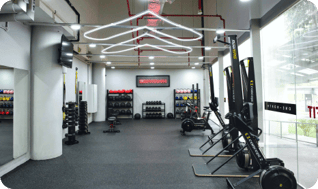If you’re a time-limited runner or a triathlete that also needs to squeeze in training on the bike and in the pool, then there are three run sessions you should fit in weekly. You should not just run the same loop at the same speed every run, unless you don’t want to become a faster runner!
To maximize training efficiency the three sessions you should be doing weekly are speed-work, tempo sessions and relaxed longer runs. Even marathoners and Ironman athletes can benefit from lung-busting 200 metre sprints.
The biggest mistake many runners make is to run hard-ish every run and never do any actual speed sessions. The speed-work improves the way you move, your biomechanics, and your running economy. That way you can run at race pace (whatever speed that might be) much more comfortably.

Speed-work
What is it?
High-speed repetitions of 200-1600m. This is the most physically demanding and mentally challenging kind of running so you will often need at least 48 hours to recover from these efforts.
The payoff for your 45 minutes of suffering is a stronger heart and more stamina.
Incorporating it into your training:
It’s best to perform these sessions at the running track for ease and a slightly more forgiving impact. Warm up by jogging at an easy pace for at least 1km. Then do these form drills: 15 seconds each of skips, butt kicks, high knees, and pick ups to ensure the body is ready for the intervals.
The main set can vary massively but an example would be 8 x 600m with a 200m walk/jog recovery. The pace should be the fastest you can maintain for the entire workout.
To cool down, jog slowly for at least 1km and do some light stretching.
You also burn major calories after your workout - in other words, you work out so hard that you keep burning calories even after the session finishes.
Tempo Session
What is it?
Longer intervals at different race paces – the speed you are looking to maintain in your upcoming race.
It improves your aerobic ‘engine’ and helps you burn more calories than other kinds of running because you’re working at a higher intensity for a long period with no rest.
Incorporating it into your training:
Run at your race pace for 1-5km’s (or potentially longer when building to a marathon) with varying recovery depending on where you are with your training. An example could be 3 x 2km’s at your 10km race with 1km easy in between intervals if you are training towards a 10km.
This will really help your body get used to running at your target pace so there are no surprises on race day – it amazes me how many people do the speed-work and easy run but never run at their run goal pace until race day!

Relaxed Run
What is it?
A slow and steady run. These burn the most fat and increase your stamina. But they can be hard on your joints if you have poor form or weak legs, so work up to longer distances.
Incorporating it into your training:
Ideally run for an hour or longer at a pace that allows you to easily hold a conversation. If you’re just starting out then this can be shorter but you should only ever increase your long run by 10% each time to avoid injury.
Running at a lower intensity for long distances is still the gold standard for endurance training. Running at this pace for a longer duration will also help you burn fat as your body will use fat stores for energy as the duration increases.
And there you have it - three runs that you should incorporate into your training.


.png?width=301&height=187&name=Website%20Navigation%20Images%20(3).png)

-1.jpg?width=1984&height=1196&name=UFIT%20Club%20Street%20Front%20(4)-1.jpg)





